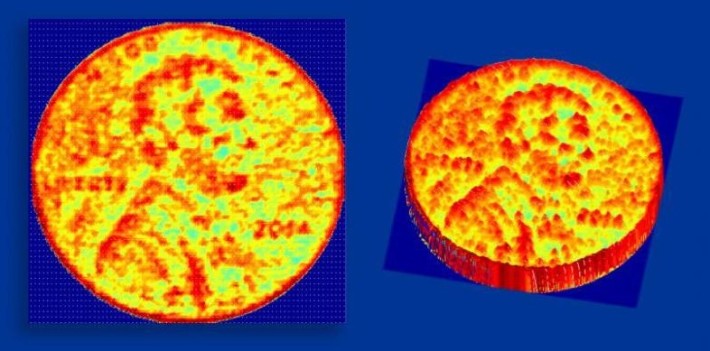The ubiquitous smartphone has become another lens through which we glimpse the world. Images and videos recorded on our phones are our daily journals of experience. CalTech researchers are currently working on another way to record our daily experiences using smartphones with built-in 3D scanners.
Electrical Engineer Ali Hajimiri is heading up his CalTech team to develop a new nanophotonic coherent imager (NCI) that would allow users to scan 3D images with their phone. The chip, which is less than a square millimeter, uses Light Detection and Ranging (LIDAR) technology to beam a laser at an object, and then analyze the light waves reflected back. Using this data collected with the tiny chip, the sensor can provide width, height, and depth information for each pixel, providing a more complex 3D image.
Each pixel contains multiple threads of information, as the chip analyzes the phase, intensity, and frequency of the reflected waves. Weaving all of these threads together produces a detailed 3D image, which, according to Hajimiri and his team, is accurate to within microns of the original object. Here is an official description from CalTech:
If two light waves are coherent, the waves have the same frequency, and the peaks and troughs of light waves are exactly aligned with one another. In the NCI, the object is illuminated with this coherent light. The light that is reflected off of the object is then picked up by on-chip detectors, called grating couplers, that serve as “pixels,” as the light detected from each coupler represents one pixel on the 3-D image. On the NCI chip, the phase, frequency, and intensity of the reflected light from different points on the object is detected and used to determine the exact distance of the target point.
So far, the lab has been able to use the chip to capture small images, but the team at CalTech is hoping to boost the size of the scanner and hopefully the size of the objects the scanner is able to capture. The current array of 16 pixels could be easily scaled up to hundreds of thousands of pixels, enough for a low resolution scanner, Hajimiri says.
The complete study, published in Optics Express, can be read here. The technology? Coming soon to a smartphone near you…



